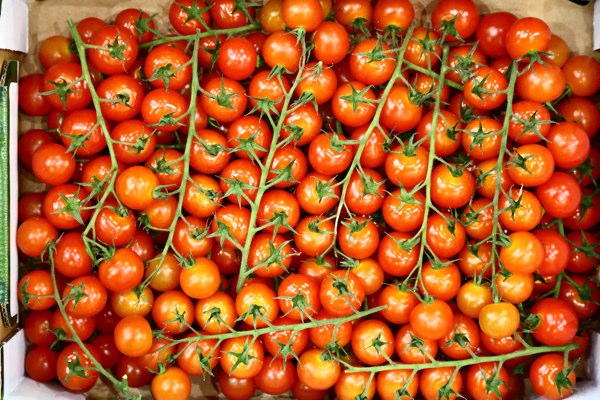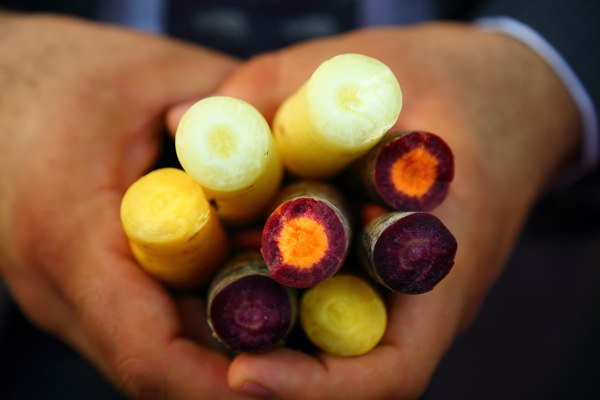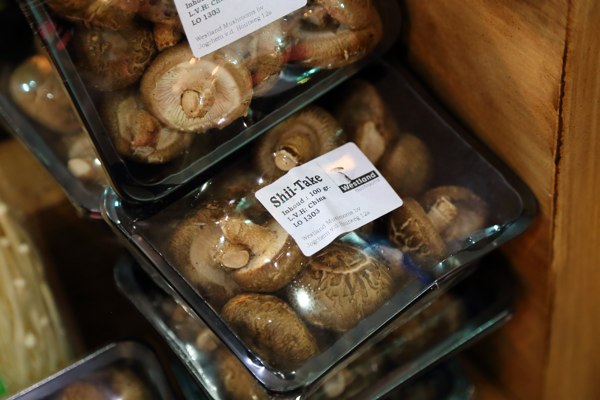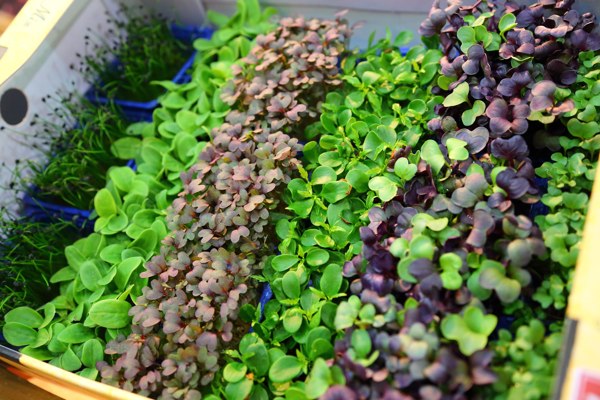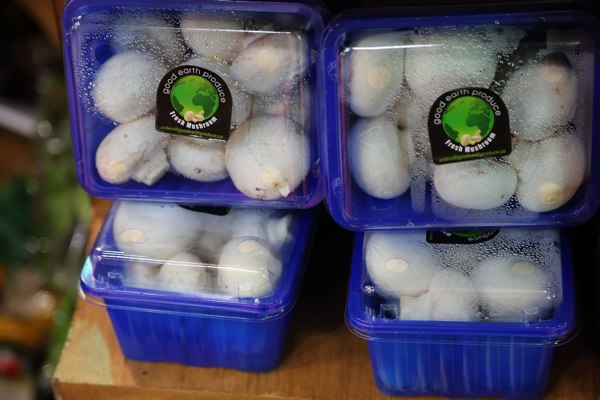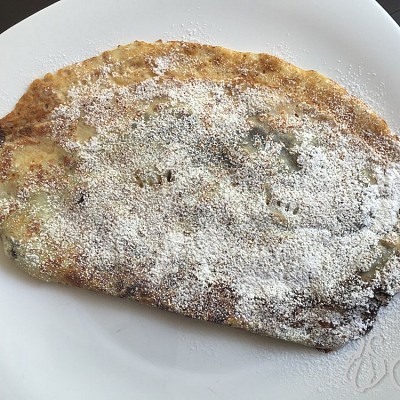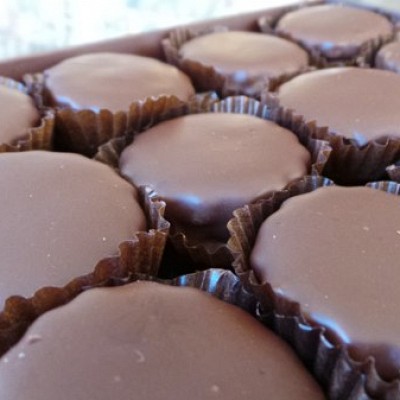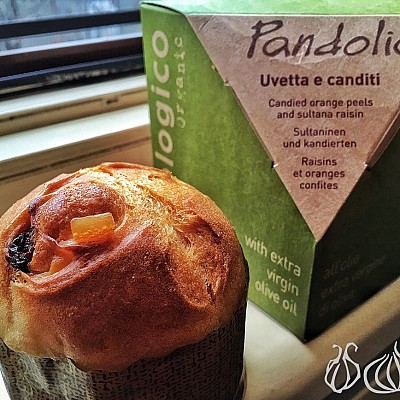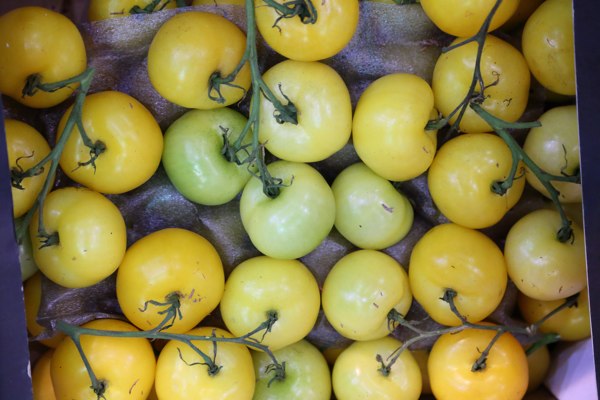While walking along the long aisles of Horeca, a particular stand caught my attention. At a corner of the food hall, fresh fruits and vegetables stacked one over the other, creating a beautiful colorful painting from earth's natural products.
I was intrigued to see why they were at the fair. The idea of selling vegetables and fruits at Horeca was interesting? Who are they. Do they think they are at Beirut wholesale vegetables market?
Libanfruits is their name. They are specialist wholesale fruits and vegetables suppliers in Lebanon. They work with the objective of delivering the best quality of fresh fruits and vegetables to customers, wholesalers in Lebanon, distributors in Lebanon, mini-markets, supermarkets, hotels and restaurants.
Whatever you ask for they have - from Pineberry to Plantain bananas. Just ask for it, they have it. Talking to them, I learned a lot of interesting facts about fruits and vegetables, original items, different varieties of the same product and much more. Beautifully stacked and professionally cleaned, Libanfruits offer a choice of products you have never even dreamed about. I really never imagined that we have such a premium choice and quality in our country.
The different choices on display:
- Pineberry (it's like a strawberry tasting pineapple) 11,000L.L
The Pineberry is a strawberry cultivar. They were publicized in Germany in April 2009, as pineapple strawberry. A pineberry is smaller than a common strawberry, measuring between 15 to 23 mm. When ripe, it is almost completely white, but with red "seeds". "The fruit flesh can range from soft white to orange and is very fragrant with a slight pineapple flavor,".
- Kiwi berry (a little berry that tastes and looks like kiwi)
Actinidia arguta is a perennial vine native to Japan, Korea, Northern China, and Russian Siberia. It produces a small fruit resembling the kiwifruit.
The fruit are referred to as kiwi berry, baby kiwi, dessert kiwi, grape kiwi,northern kiwi, or cocktail kiwi and are edible, berry or grape-sized fruit similar to kiwifruit in taste and appearance, but are green, brownish, or purple with smooth skin, sometimes with a red blush. Often sweeter than the kiwifruit, hardy kiwifruit can be eaten whole and need not be peeled. Thin-walled, its exterior is smooth and leathery.
- Blueberry
- Raspberry
- Strawberries
- Six kinds of tomatoes (orange tomato, yellow tomato, red cherry tomato on the vine, cherry tomato (tear drop) kumato, Lebanese village tomato)
- White eggplant
- Baby eggplants
- White radish
- Cassava
- Carrots (yellow, black, white, purple and orange, baby carrot)
- Dragon fruit
- Passion fruit (yellow passion fruit "maracuya" and passion fruit)
- Banana leaves
- Tamarillo (kind of tomatoes)
Solanum betaceum is a small tree or shrub in the flowering plantfamily Solanaceae "the nightshade plant". It is best known as the species that bears the tamarillo, an egg-shaped edible fruit. Other names include tree tomato, tomate de árbol, and Dutch eggplant, in Indonesia. 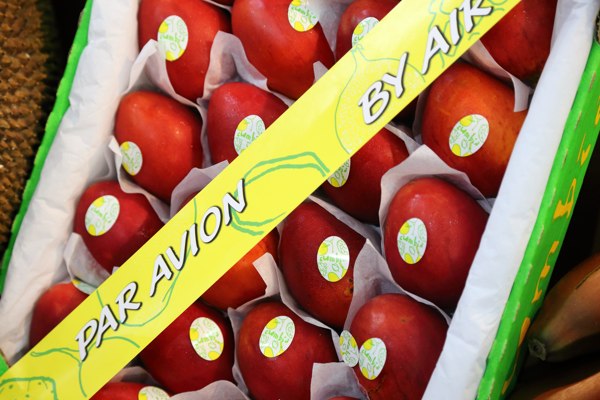
- Pineapples
- Red banana (plantain)
- Ramboutan
- Mushrooms (Shii-meji, Enoki, Shii-take mushroom)
- Mangosteen
The purple mangosteen (Garcinia mangostana), colloquially known simply as mangosteen, is atropical evergreen tree believed to have originated in the Sunda Islands and the Moluccas ofIndonesia. It grows mainly in Southeast Asia, and it also grows in tropical South American countries such as Colombia, where the tree has been introduced.
- Sakura mix (mini Japanese leaves) koppert cress
The Sakura Mix includes: Daikon Cress, Mustard Cress, Rock Chives, Shiso Purple and Tahoon Cress and occasionally Affilla Cress, Borage Cress, BroccoCress, Atsina Cress and Ghoa Cress. Sakura Mix is a mix for connoisseurs. The Sakura Mix includes six Koppert Cress creations. Sakura Mix is available year round and can easily be stored for up to ten days at a temperature of 2-4°C. Produced in a socially responsible culture, Sakura Mix meets the hygienic kitchen standards. The product is ready to use, since it is grown clean and hygienically.
- Physalis
Physalis is a genus of plants in the nightshade family, native to warm temperate and subtropical regions throughout the world. The genus is characterized by the small orange fruit similar in size, shape and structure to a small tomato, but partly or fully enclosed in a large papery husk derived from the calyx. Many Physalis species are called ground-cherries.
On another hand the same company started the production of fresh mushrooms and endives in Lebanon and for the first time in the middle east, bringing to the region what used to be imported from France.
Endive, Cichorium endivia, is a leaf vegetable belonging to the daisy family. Endive can be cooked or used raw in salads. Endive belongs to the chicory genus, which includes several similar bitter leafed vegetables. Species include endive (Cichorium endivia), Cichorium pumilum, and common chicory (Cichorium intybus). Common chicory includes chicory types such as radicchio, puntarelle, and Belgian endive.
Endive is rich in many vitamins and minerals, especially in folate and vitamins A and K, and is high infiber. Endive is also a common name for some types of chicory.
There are two main varieties of cultivated endive:
- Curly endive, or frisée. This type has narrow, green, curly outer leaves. It is sometimes called chicory in the United States and is called chicorée frisée in French. Further confusion results from the fact that frisée also refers to a technique in which greens are lightly wilted with oil.
- Escarole, or broad-leaved endive has broad, pale green leaves and is less bitter than the other varieties. Varieties or names include broad-leaved endive, Bavarian endive, Batavian endive, grumolo, scarola, and scarole. It is eaten like other greens, sauteed, chopped into soups and stews, or as part of a green salad.
Good Earth Produce plants in Lebanon: White button mushrooms, oyster mushrooms, Porto bello mushrooms.
So when you see an original or different shaped, coloured fruit or vegetable in your plate - you now know what you're eating...
























